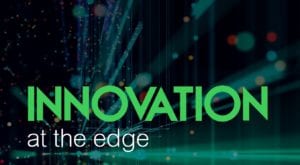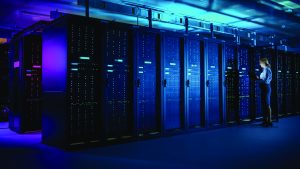Approximately 85% of buildings that exist today will still exist in 2050. The year 2019 saw the UK become the first major economy to pass laws to bring to an end its contribution to global warming by 2050. This objective aims to bring greenhouse gases emissions to ‘net-zero’ by 2050 compared to the previous target; an 80% reduction from 1990 levels.
The performance gap related to buildings is a common issue that occurs due to a lack of effective maintenance and/or due to oversight(s) during the design or commissioning stages. This, alongside changes that inevitably take place during the lifecycle of a building, can result in a decline in building performance and comfort levels. Globally, energy efficiency actions in existing buildings could contribute to a 48% decline of world emissions by 2030, with 43% of this coming from buildings.
The control of indoor environments i.e., heating, cooling, and lighting provides comfort to users and functionality to spaces. However – heating, cooling, and lighting are also generally the largest consumer of energy in buildings. The introduction of widely available smart and IoT-enabled technologies within whole-building renovation or floor improvement solutions can not only support the reduction of building emissions and operational expenditure but provide an increased user experience through the creation of highly optimised and ‘smart’ spaces.
![Enhancing Existing Building Performance and Reimagining End User Experience [Part 1]](https://blog.se.com/wp-content/uploads/2021/08/Skyline_Digital-1-300x125.png)
What is a smart building?
A Smart Building can be described in many ways, however – at its core, it is a building that is designed to be fully integrated and able to use the large amount of data it produces to not only follow commands but learn from occupant behaviours and the individual operations of systems to pre-empt comfort challenges and propose solutions to energy efficiency or operational issues whilst taking into account its trajectory.
In order to consistently meet a building’s general objective of energy efficiency, durability, user comfort, and user wellbeing, it needs to be adaptable and not reactive to the inevitable maintenance or design issues which together build up to create a drift in a building’s intended performance levels. The full potential of the ‘Internet of Things’ to positively affect a building is yet to be broadly harnessed. Through the introduction of IoT-enabled technology, wireless sensors, and software, new and existing data can be used to transform the functionality, usability, and energy efficiency of spaces within a building.
Accelerating building intelligence using IoT
The issue of performance deterioration of a building in relation to energy consumption and user comfort is a complex challenge due to the unique nature of buildings and their intended uses, individual control systems, and maintenance teams. Building Management Systems have for many years provided masses of data – with alarming covering the most essential issues.
Insight into legacy system data has always required human interpretation which relies on time, experience, and knowledge. However, if a non-calibrated sensor or a poorly functioning field device is causing inadequate control related to cooling or heating and leaving the system to pick up the slack, it becomes easy to understand why steady building performance is uncommon; especially in a large building where issues which aren’t clearly visible can multiply by an order of magnitude over time.
From this perspective, the development and integration of systems based on the Internet of Things (IoT); using widely available connected sensors and devices that deliver real-time data to the cloud and provide real-time actionable insights into building performance. IoT can enable the interaction between various physical assets and individual systems. The range of software solutions available to benefit upgrades of Building Management Systems can be used to enable the data a building produces to be treated as an interrelated system in order to identify patterns and relationships beyond human capacity.
There is an extensive availability of solutions in packages such as Software as a Service (SaaS), which can be a cost effective ‘first-step’ to make use of IoT and the ability for data from the BMS is analyzed in a virtual environment (the cloud). This gives flexibility for cost saving and comfort improving insights, recommendations and reports to be delivered anywhere at any time. However, this option relies on site staff with the required expertise to manage, interpret and act on the analysis presented in-order to maximize building efficiency and comfort. Managed Software as a Service (MSaaS) combines the benefits of SaaS with the oversight of remote technical expertise which can drive the required changes through remote troubleshooting and guidance of on-site facilities teams. Several other software opportunities exist such as On-premises or Infrastructure as a Service (IaaS). To bring about the maximum return-on-investment, these solutions must be judged objectively according to scalability, ease of adaptation and full capital expenditure.
Digital twins and building performance
As digital transformation continues to affect the world in altering markets and introducing innovative competitors and business models, buildings are not being left behind. Within the building technology area, one method digitization is causing disruption is implementation of digital twins: the digital representations of physical buildings. This has been made possible through advancements in IoT, reduced sensor prices and the possibility of machine learning becoming more widely available. Digital Twins carry immediate successes such as energy reporting, insights leading comfort improvements and energy efficiency.
The initial step on the journey to creating Digital twins is the prerequisite for quality data. This requires knowledge in the area of building performance, building technology as well as digital skills. The effect of quality data from sensors, devices and plant is the ability to link previously unrelated parts of a building in the digital representation through cloud connectivity. This creates a continuous two-way connection between physical and digital assets and the allows for constant monitoring which enables an added layer of resiliency and enhanced planning.
Benefits of digital twins also include the capability of undertaking simulations within the digital twin with the intention of delivering evidence-backed projects which improve features such as comfort and energy efficiency in the physical twin. Testing within digital twin can prove to be incredibly valuable as it can be done without hampering day-to-day operations. Another common benefit of digital twins is the availability of predictive maintenance. For example, when the operating temperature of an asset existing in the physical twin is higher than the expected temperature in digital twin, the system will trigger a request for an investigation.
Furthermore, what will possibly carry the highest value to adopters and investors is what machine learning can make possible; the automated capability of digital twins to constantly learn and optimize systems to deliver energy efficiency and comfort improving actions without intervention. Overall, the benefits related to digital twins create the capability of positively affecting building performance throughout their life cycle.
My next post will explore the idea of reimagining building end-user experience, and what can be achieved by using technology to create dynamic and efficient spaces as employees continue to return to offices. To learn more on the topics covered above, discover the Schneider Electric vision for Buildings of the Future.



